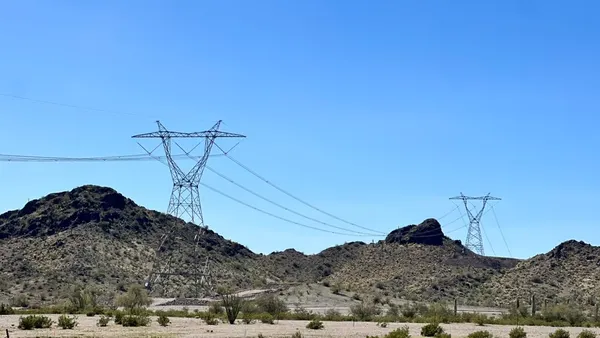A “transmission equipment failure” Wednesday evening sent the New England grid operator scrambling to draw down capacity reserves as demand rose higher than anticipated.
The failure occurred shortly after 6 p.m., and “significantly reduced imported electricity coming to New England,” the independent system operator said in a Thursday blog post. “At the same time, consumer demand for electricity was slightly higher than expected. This combination left the region short of the resources required to meet consumer demand and required operating reserves.”
In response, ISO New England declared an Energy Emergency Alert Level 1 and utilized the region’s 30-minute operating reserves. An EEA Level 1 is the lowest of three emergency levels defined by the North American Electric Reliability Corp., and is called when an operator is concerned about maintaining contingency reserves.
The New England grid operator typically maintains about 625 MW in its 30-minute reserves and up to 2,250 MW in its 10-minute reserves.
The ISO does not yet have details about the equipment failure or extent of the capacity shortage, according to spokesman Matt Kakley.
“We’ll have more information in the coming days as the data is reported and verified,” he said in an email.
The transmission outage occurred during the system’s evening peak, meaning “sufficient resources were not able to respond quickly enough to avoid the capacity deficiency,” the grid operator said. Because of the short duration of the event, however, ISO-NE said it was not necessary to ask the public to reduce consumption.
The capacity deficiency was addressed within half an hour, though the region maintained defensive operating procedures for 3.5 hours “as peak demand receded and the power system returned to normal operations,” the grid operator said. A problem with data feeds to the ISO-NE web site and mobile app, however, “caused these platforms to report erroneously that system conditions were abnormal for several hours after the event.”
Transmission planning has been a major focus as states and grid operators look to maintain grid reliability. In June, eight Northeastern states requested the U.S. Department of Energy help fund and support an interregional transmission planning collaboration across ISO-NE, the New York Independent System Operator and the PJM Interconnection. The grid operators support the effort.
NYISO can export 1,600 MW to ISO-NE, according to a May report from the grid operator. There is no direct transmission connection between PJM and New England, however.














